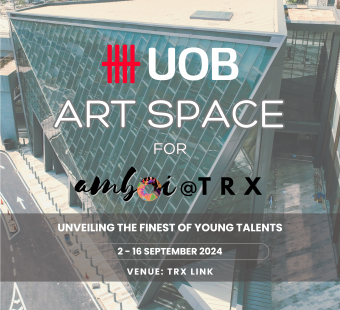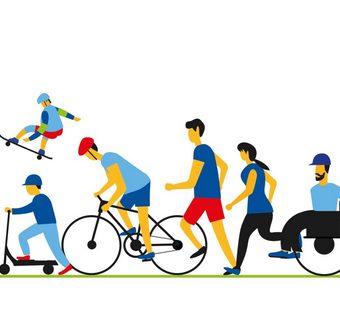Kuala Lumpur had gone through amazing transformation over the last century. Physical, social and economic progress have placed this tin mining town into a bustling metropolis rivaling its peers in the region.
Greater Kuala Lumpur is now a modern city with gleaming high-rise buildings, connectivity and infrastructures. The city roads continue to grow, and they morph not just in size but in names too. As a young capital, our road names are rich in history.
Long gone are the mud tracks and bullock carts but some names are still alive today to tell the story. Old names were mostly topographic and nature derived – trees and terrains, or physical landmarks and local activities during the eras. Such as Jalan Ipoh and Jalan Pudu reflected the natural trees found in the area or Jalan Brickfields to echo the kilns and brick factories in the area.
New Era of National Identity
In the 1980s some English streets names were changed to mark the country’s way forward away from colonisation and to celebrate outstanding local figures posthumously, like Jalan Campbell taking the name from British Advisor to Johor, Douglas Graham Campbell, to Jalan Dang Wangi to honour the female warrior Dang Wangi, the wife of the notorious and loyal Hang Jebat.
National Names for National Pride
As the city grew busier, more names changed over time. Treacher Road, named after William Hood Treacher, second resident general of Federated States of Malaya, was changed to Jalan Sultan Ismail, after the Sultan of Johor.
Further up the street by the intersection, Jalan Raja Chulan was originally known as Weld Road, after Sir Frederick Weld who was the Governor of the Straits Settlements until, it was renamed in 1982 after Raja Chulan, the Raja di Hilir Perak.
KL's major road, Jalan Tun Razak was originally called Circular Road for its beltway-like layout. Often still called Jalan Pekeliling to date, it was renamed in 1983 to commemorate the second Prime Minister, Tun Abdul Razak Hussein.
Some changed some remains
However, there are still many roads keeping their age-old name.
Jalan Doraisamy which is known for The Row, a stretch of century-old buildings housing hip cafes, restaurants and bars got its name from a tin miner, contractor and education visionary R. Doraisamy Pilay, who established the Kuala Lumpur Methodist Boy’s School (MBSKL).
Jalan Cochrane near Maluri that connects to Pudu is unchanged. It was named after Charles Walter Hamilton Cochrane, a British Resident of Perak and later Chief Secretary to the Government of the Federated Malay States.
Jalan Yap Kwan Seng was named after the last Chinese Kapitan and philanthropist Yap Kwan Seng. Hailed from Canton and made his fortune in Malaya at a young age in the tin mining industry, he financed Pooi Shin Thong, providing free Chinese medicine and care to the needy. His clinic is now the famous Tung Shin Hospital. Yap also co-founded Victoria Institution.
Jalan Bukit Bintang remains its’ original name, after Kampung Bukit Bintang, a tall hill for stargazing site by the locals. Long flattened and gone, the area is between Jalan Changkat Thambi Dollah and Jalan Barat.
The affluent Jalan Conlay was named after the British agent to Terengganu, William Lance Conlay, the Police Commissioner of the Federated Malay States. He was the first British agent sent to the unfederated Malay state under the British's rule. He was known to be a multi-lingual officer and served the British government in many colonies. Jalan Conlay is now known for the remaining colonial houses and the Craft Complex.
Tucked away behind the mammoth Lot 10, the little street Jalan Walter Grenier, famously known by the city dwellers previously for the open air food court, was named after Walter John Piachaud Grenier, a leader of the Venning Road Gospel Hall, which is now the Jalan Imbi Chapel at the end of the road.
Impactful personas remain remembered
Down towards Bangsar, the neighbourhood was a rubber plantation before it became the hip Bangsar we know. Merchants Edward Bunge and Alfred Grisar opened ‘Bunge-Grisar Rubber Estate’, which was shortened to just ‘Bung-Sar Estate’. The road into this estate became ‘Bung- Sar Road’ and later renamed Jalan Bangsar.
Around the corner, Jalan Travers and its new flyover also has a good story. The street honours Dr Ernest Aston Otho Travers for his contributions in treating opium addicts and the establishment of the Sungai Buloh leprosy clinic. Dr Travers championed free healthcare for everyone regardless of race, religion and residency status, later becoming the Acting Protector of Indian Immigrants in 1890 and Health Officer of Kuala Lumpur in 1894.
Names and changes aside, Kuala Lumpur is more than just the old muddy confluence. It is now a shiny metropolis with global outlook. The city is an amalgam of history and culture intertwined with technological advancement and future-proofed city citizens. Kuala Lumpur is an amazing instance of a city that has managed to preserve the best of its cultural heritage and combine it with modern conveniences for a sustainable and forward looking growth.
--
Image sources:
Slider 1: Jalan Ipoh - https://www.pinterest.com/pin/780248704163793698/ & Jalan Tun Razak - https://www.pinterest.com/pin/430797520587304354/
Slider 2: Treacher Road – Jalan Sultan Ismail - https://says.com/my/lifestyle/before-and-after-photos-of-famous-roads-in-kuala-lumpur
Thumbnail & Slider 4: Jalan Bukit Bintang https://www.viator.com/Kuala-Lumpur-attractions/Bukit-Bintang/d335-a13509 & https://www.pinterest.co.uk/pin/137430226100245101/








